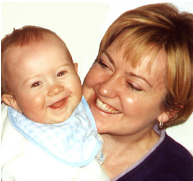The Causes of Hostility
Leon J. Saul, M.D.
...There is no scientific evidence to surely establish that hostility per se (except as the mechanism of adaptation we have described) is inherited. Nor is there evidence that any other form of neurosis is carried in the genes. Individual differences in temperament are doubtless inherited to some extent, just as there are differences in body build and colouring. A glance around any hospital nursery shows the newborn to be of all shapes and sizes, and of varying motility and tenseness and responses to cuddling. But there is only meagre and uncertain evidence for heredity being of any appreciable weight in the etiology of emotional disorders (other than, possibly, some forms of psychosis). Hostility cannot simply be passed off as something we inherit and hence can do nothing about. On the other hand, excessive hostility is regularly found to be a disease of personality, transmittable from person to person and from group to group, and basically by contact from parents to children, from generation to generation.
It is true that from earliest recorded history we read of tribes, cities, and nations attacking others, stealing lands and movable wealth, taking as many slaves as they wished for cheap labour and for sexual purposes and killing off all the rest to eliminate competition and the risks of retaliation. Then the fear of being themselves looted, pillaged, raped, murdered, and enslaved by other nations led to constantly expanding frontiers. Rome pushed her boundaries farther and farther for all these reasons; to take the riches and to impose her peace.
And yet not every man in every nation yearned for aggressive pillage and murder; not all rulers were cruel tyrants. The hostility involved in robbing, murdering, and enslaving is not necessarily a general human characteristic, but rather an attribute of certain personalities. It is a matter of how readily corruptible the individual is. Indeed, if the major motivating forces in each of us could develop normally, without damaging interference or coercion from the outside, the result would be friendly, social co-operation. Only when this development is disturbed during the earliest formative years of infancy and childhood, by active mismanagement or by gross neglect (whether unconscious and well-meaning or conscious and wilful), does the fight-flight reaction, with its resulting hostility, burgeon in full strength. In contrast to the absence of evidence for hereditary factors in determining the intensity and status of hostility in different persons, the clinical experience of dynamic psychiatry with children and adults repeatedly emphasizes the significance of conditioning influences and their basic importance in causing vulnerabilities to external stresses and emotional disorders.
Copyright © 1980, Leon J. Saul, The Childhood Emotional Pattern. Reprinted with permission of Van Nostrand Reinhold.
